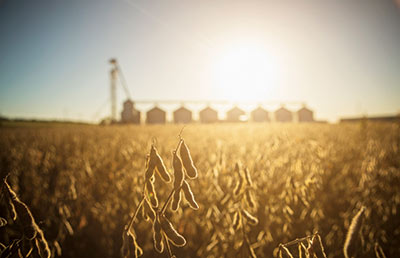Are You Dealing?

Many farmers have a side operation that deals in the buying and selling of commodities. One example is a hay farmer who also purchases hay from other growers and then delivers it to a dairy. The Proposed Regulations from last week appears to indicate that this is a “dealing in commodities” and may be treated as income from a specific service trade or business (SSTB) (unless the final regulations clarify otherwise).
If a farmer or taxpayer is under the threshold amount ($157,500 or $315,000 of taxable income if married filing joint), we really don’t care if the income is treated as SSTB. It all qualifies for the 20% deduction and the W2 wages and/or qualified property limitation does not apply.
However, if the income is over the threshold plus the phase-in amount ($50,000 and $100,000 (MFJ)), then we care a lot. In this situation, none of the net income associated with a SSTB is allowed for the deduction. Higher income farmers who also deal in commodities will now have to bifurcate their income between farm operations and “commodity dealing”. Let’s look at an example:
Al grows high quality hay that he contracts to sell to a dairy. During 2018, he contracted to deliver 5,000 tons to the dairy at $250 per ton. He was unable to grow all 5,000 tons and had to purchase 1,000 tons from a neighbor at $200 per ton. If the Proposed Regulations are unchanged, then the $50,000 profit from buying and selling the grain will not qualify for any Section 199A deduction. This will result in taxable income being $10,000 higher than expected.
Now let’s expand this to a private elevator system. In this case, the elevator will generate income from storage and warehousing but will also generate net income from buying grain and then selling it. This will likely result in a large amount of the owner’s income not qualifying for the Section 199A deduction. Here is an example:
ABC Warehouse, LLC generates net income of $3 million per year. Of this amount, $1.8 million is attributable to buying and selling the grain delivered to the elevator. If all income is qualified, then the owner would get a $600,000 Section 199A deduction, but if the buying and selling is “dealing” for purposes of Section 199A, then the deduction falls to $240,000. If the owner is in the highest tax bracket, the potential tax increase is $133,200.
We don’t believe this was the intent of Congress. The Code Section the IRS is relying primarily related to commodity futures and options dealers, not farmers and warehouse owners. If this ends up as the Final Regulation, then many farmers and other taxpayers could be facing a huge extra tax bill they were not counting on. If you fall into this situation, please contact your tax advisor and let the IRS know your opposition to this proposal. Taxpayers who actually take possession of the commodity (rather than dealing in paper) should not be treated as an SSTB.
Paul Neiffer is a certified public accountant and business advisor specializing in income taxation, accounting services, and succession planning for farmers and agribusiness processors. Paul is a principal with CliftonLarsonAllen in Walla Walla, Washington, as well as a regular speaker at national conferences and contributor at agweb.com. Raised on a farm in central Washington, he has been immersed in the ag industry his entire life, including the last 30 years professionally. Paul and his wife purchase an 180 acre ranch in 2016 and enjoy keeping it full of animals.

Comments are closed.